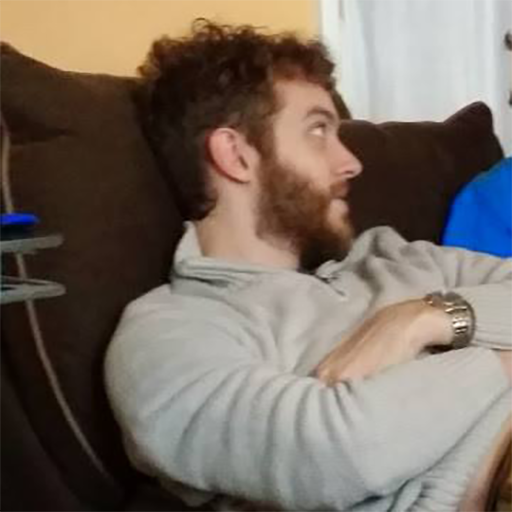This past weekend, my laptop decided it’s had enough and has given me the blue screen of death. I’ve put it in recovery mode, tried to reinstall windows, the works, and it refuses. I have no idea why. I was logged on, looking something up, and it went kaput. I wasn’t downloading anything, the computer was in it’s sleeve prior, not too wet, cold, hot, etc. Battery is fine, the laptop it’s self is maybe two years old.
My understanding is that Linux is a kind of system that you download the components to a USB or what not and then install it on your machine. Is that something I could do in this case? Or do I need to take it somewhere?
Edit: it seems I may have to check if it’s a hardware problem. The error code is Bad_system_config_info, but it changed to something else at one point but I didn’t write that one down. :(
Could Linux save my laptop?
Depends on the root cause of the BSoD. If it’s a hardware issue, then no, installing Linux won’t fix an underlying hardware issue. What does the BSoD screen actually say? Any specific error code?
My understanding is that Linux is a kind of system that you download the components to a USB or what not and then install it on your machine. Is that something I could do in this case?
Yep, you could do that, but you’ll need a functioning PC to create a USB installer for the Linux OS of your choice. You’ll need a blank USB drive and some software to “flash” the Linux OS installer to the USB drive. e.g.: https://linuxmint-installation-guide.readthedocs.io/en/latest/burn.html
This was the code: Bad_system_config_info
Gotcha. You mentioned you put the PC into Recovery Mode and tried to reinstall Windows, but it didn’t work. What happened that prevented the re-installation of Windows? Did the PC just shutdown during installation, or were you wholly unable to get the Windows installer to run?
If you’re still able to boot into Recovery Mode/Safe Mode, try opening up a Command Prompt and running the SFC Scan and DISM commands outlined here: https://www.howtogeek.com/222532/how-to-repair-corrupted-windows-system-files-with-the-sfc-and-dism-commands/
When I was trying to reinstall, it stopped in the middle and gave me. The blue screen. I can trick it into the recovery ry mode, so I’ll give the command a try. Thank you
One of the first hardware things I check when a system starts getting a bit fucky is the memory. Check out memtestx86. Depending on how beefy your system is, you may have to let it run for a day or so, but it will do a rather thorough series of bitwise checks of your entire memory space, and let you know if there are any hardware faults, and indicate which physical module is the problem. If that gives you any hits (and assuming the RAM is swappable/upgradeable), just swap out your memory with some new ones (I generally go with factory-paired modules, unless it’s a system I don’t care much about, but you should absolutely used matched speed and timing on the modules you swap in).
I mean if you have a usb lying around, putting ubuntu on it and trying is free. Worth a shot, you could get access to the drive too if it works. If that doesn’t work you could still bring it into the shop to get worked on.
Open that bad boy up, it needs some hardware inspection. Check for water damage, dust accumulation, zapped capacitors, loose screws and parts. Try to get a command prompt going and use the tools like others said.
If reinstalling windows didn’t fix the issue then you most likely have a hardware issue. You could always make a linux live USB and see if that works. The live USB won’t touch your HDD so if the HDD is the problem you won’t know until after you’ve installed linux.
Before you do that download a program like hwinfo and look at your temps. Specifically CPU temp. Somewhere towards the bottom it will tell you stats about your HDD as well and it may include what SMART thinks your HDD’s health is.
Try a live USB distro first. If it is your hard drive It will eliminate that as a problem temporarily letting you diagnose.
If the windows reinstall won’t run or won’t complete, It could be anything from a dead fan to a bad memory controller.
What laptop vendor? Most vendors have a hardware tester that you put on a usb and test for hardware issues.
Same for windows. You can download windows usb creator utility and use it to reinstall windows from scratch.
It’s a cheap hp laptop. I was in a pickle when I needed it and I’ve paid the price. 😭
Yeah get on their website and see if you can find the usb tool. Should at least tell you the problem.
It could be something easy like a bad stick of ram that you can just pull out.
I’ll give that a try. Thank you!
I am a complete amateur, so take it with a big grain of salt, but it might be hardware problem, maybe the SSD has gone bad. The best way to test it might be to try install Linux, and use it for few hours from the USB itself in live environment
First I’ll say, if you aren’t able to boot a windows installer off of a flash drive (and nothing’s wrong with your flash drive and you created it without errors and there isn’t a setting in bios preventing you from booting it like disabled USB boot) then it could be a hardware issue that Linux won’t fix (it’s not clear how you tried to reinstall windows). But if you’re able to get to the windows logo or the menu for safe mode then it sounds like it “POSTs” (gets past showing the bios screen) and windows should be reinstallable. In short, I think it’s unlikely to be a problem that only Linux can fix if you want to stick with windows.
That said, if you are otherwise interested in trying Linux and create a USB installer, most will allow you to exit the installer or choose to go into a temporary “live desktop” where nothing is saved, so it’s a good opportunity to try out how that distro feels to use - just don’t save anything important. And if you do end up installing either OS, you can use that “live mode” to use programs to back up any files from your main hard drive to another plugged in drive.
You should look at event viewer to see what is causing the problems. If the problem is overheating, a bad HDD, or bad ram then I doubt Linux would help.






